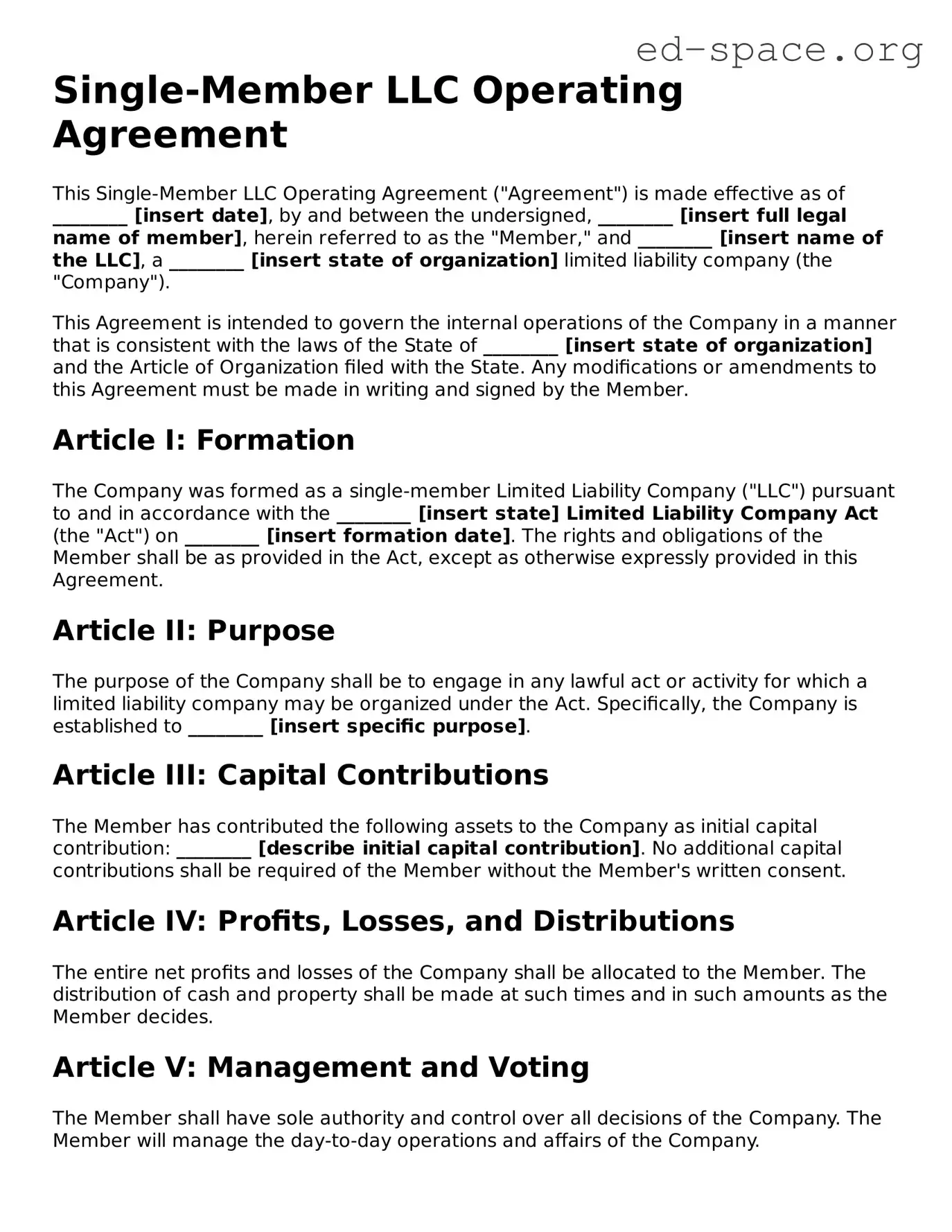Single-Member LLC Operating Agreement
This Single-Member LLC Operating Agreement ("Agreement") is made effective as of ________ [insert date], by and between the undersigned, ________ [insert full legal name of member], herein referred to as the "Member," and ________ [insert name of the LLC], a ________ [insert state of organization] limited liability company (the "Company").
This Agreement is intended to govern the internal operations of the Company in a manner that is consistent with the laws of the State of ________ [insert state of organization] and the Article of Organization filed with the State. Any modifications or amendments to this Agreement must be made in writing and signed by the Member.
Article I: Formation
The Company was formed as a single-member Limited Liability Company ("LLC") pursuant to and in accordance with the ________ [insert state] Limited Liability Company Act (the "Act") on ________ [insert formation date]. The rights and obligations of the Member shall be as provided in the Act, except as otherwise expressly provided in this Agreement.
Article II: Purpose
The purpose of the Company shall be to engage in any lawful act or activity for which a limited liability company may be organized under the Act. Specifically, the Company is established to ________ [insert specific purpose].
Article III: Capital Contributions
The Member has contributed the following assets to the Company as initial capital contribution: ________ [describe initial capital contribution]. No additional capital contributions shall be required of the Member without the Member's written consent.
Article IV: Profits, Losses, and Distributions
The entire net profits and losses of the Company shall be allocated to the Member. The distribution of cash and property shall be made at such times and in such amounts as the Member decides.
Article V: Management and Voting
The Member shall have sole authority and control over all decisions of the Company. The Member will manage the day-to-day operations and affairs of the Company.
Article VI: Transfer of Membership Interest
The Member shall not transfer any interest in the Company without the prior written consent of the Member, which consent may be granted or withheld in the Member's sole discretion.
Article VII: Dissolution
The Company shall be dissolved and its affairs wound up upon the decision of the Member, the occurrence of events specified in the Act, or as otherwise required by law.
Article VIII: Miscellaneous
-
Governing Law: This Agreement shall be governed by and construed in accordance with the laws of the State of ________ [insert state], without giving effect to any choice or conflict of law provision or rule.
-
Amendments: This Agreement may be amended only by a written agreement signed by the Member.
-
Severability: If any term or provision of this Agreement is held to be invalid, illegal, or unenforceable in any situation in any jurisdiction, such invalidity, illegality, or unenforceability shall not affect any other term or provision of this Agreement or invalidate or render unenforceable such term or provision in any other jurisdiction.
-
Entire Agreement: This Agreement constitutes the sole and entire agreement of the Member with respect to the subject matter contained herein, and supersedes all prior and contemporaneous understandings, agreements, representations, and warranties, both written and oral, with respect to such subject matter.
Signatures
IN WITNESS WHEREOF, the Member has executed this Single-Member LLC Operating Agreement as of the date first above written.
Member: ___________________________________________
Name: ________ [insert name]
Date: ________ [insert date]
